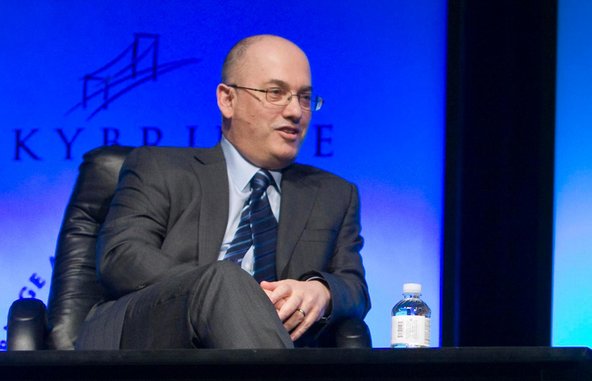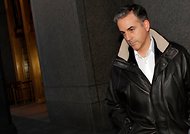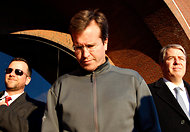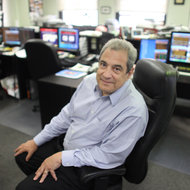At last count, SAC Capital had roughly $14 billion under management; a little more than half belongs to Mr. Cohen. He was not charged by the government, and the firm has denied the charges, saying it neither encouraged nor tolerated insider trading by its employees.
But SAC Capital is certainly under siege. The government contends that “systematic insider trading by SAC entity defendants” resulted in hundreds of millions of dollars of illegal profits and avoided losses at the expense of the investing public. SAC’s relentless pursuit of an information edge, the government contended, fostered a business culture “in which there was no meaningful commitment to ensure that such ‘edge’ came from legitimate research and not insider information.”
On Friday, an SAC spokesman said the firm would keep operating. But if investors continue to flee, it will have to meet those redemptions. Even before the indictment, many investors had requested that the firm return their money. In addition, the government said it would go after “any and all assets” of SAC Capital and its affiliates in collecting penalties.
It’s hard to know what stocks the fund holds and may have to sell, since its portfolio holdings are disclosed only quarterly and it is famous for short-term trading.
To be sure, SAC’s $14 billion under management is not enough to pose a risk to the financial system. And even though it is a large and well-known operation, SAC’s assets are a drop in the $2.4 trillion bucket of overall hedge fund assets, according to Hedge Fund Research.
But like most hedge funds, SAC uses leverage to try to amplify its gains. It can do this by borrowing money from the Wall Street firms that conduct its trades or other entities. As a result, its money under management significantly understates its total investment exposure.
As part of the Dodd-Frank legislation, large hedge funds were required to register with the Securities and Exchange Commission and to make new disclosures so regulators could watch for potential risks that these funds might pose to the financial system. Among the new disclosures the funds have to make are reports of assets under management and the use of leverage.
For SAC, this figure, known as total regulatory assets, stood at $50.9 billion, according to an S.E.C. filing made by the fund last Tuesday.
There is a big difference between $14 billion and almost $51 billion, of course — and it is leverage. A wonderful tool that generates heightened profits when assets are rising, leverage can crush you when it comes time to sell.
Adding to the difficulty in unwinding a large portfolio is this fact: When Wall Street firms get a whiff of trouble at a fund whose holdings they know well, they are known to capitalize by front-running — buying and selling in advance of the fund’s forced trades, increasing its losses as it liquidates.
That is precisely what happened when Long-Term Capital Management hit the skids in 1998. Some brokerage firms that held the fund’s securities profited from such front-running after being allowed to pore over its books as regulators fashioned a rescue. These trades exacerbated Long-Term Capital’s losses.
In other words, in a liquidation, Mr. Cohen may learn how loyal, or not, the firms on which he lavished such hefty commissions over the years will be. When it comes to unwinding a huge portfolio, these firms may make a notable 2004 art purchase by Mr. Cohen — of a tiger shark in formaldehyde, by Damien Hirst — look like a guppy.
Knowing a firm’s portfolio positions, especially if it is in distress, is a crucial edge, to use the government’s word, that Wall Street has over the rest of the world.
Mr. Cohen is obviously an intelligent man and a brilliant trader who may be able to keep his firm together while the criminal trial unfolds. Clients who believe in his trading skills may stick by him, preventing a liquidation. Certainly, the government’s charges of “hundreds of millions” in improper gains or avoided losses don’t come close to the gains SAC generated for investors over the years.
Some money managers believe that investors who ignore questionable activities at a hedge fund are part of the problem. “If investment gains were the result of insider trading, they should claw back some money from customers,” said Frederick E. Rowe, a money manager at Greenbrier Partners in Dallas. “If a client is paying a 3 percent management fee and 50 percent of the profits, as was the case at SAC, don’t you think he knows the guy’s got an edge he shouldn’t have?”
But a clawback of investor profits doesn’t seem to be coming. In prepared remarks announcing the SAC indictment on Thursday, Preet Bharara, the United States attorney for the Southern District of New York, said the government had chosen not to freeze the firm’s assets. “We are always mindful to minimize risks to third-party investors,” he said. “In other words, we have not restrained any money, and we will discuss with the company a reasonable method going forward to protect everyone’s legitimate interests.”
As the government moves forward to trial on the SAC case, some former Wall Streeters question why prosecutors are not also focusing on the big investment firms with which Mr. Cohen did business.
Ted Parmigiani is a former research analyst at Lehman Brothers who has tried to persuade regulators and prosecutors to investigate whether Wall Street releases market-moving research reports to favored hedge funds ahead of other customers.
He said the training that many future hedge fund traders receive at Wall Street firms sets the tone. “On the surface you’re going to find that Wall Street has great compliance,” Mr. Parmigiani said. “But a lot of these people learn early on that when you are making money for the firm, even if it is over the line, as long as you’re doing it and you’re smart about it, then there’s a place for you.”

Article source: http://www.nytimes.com/2013/07/28/business/how-to-gauge-sac-on-the-richter-scale.html?partner=rss&emc=rss









